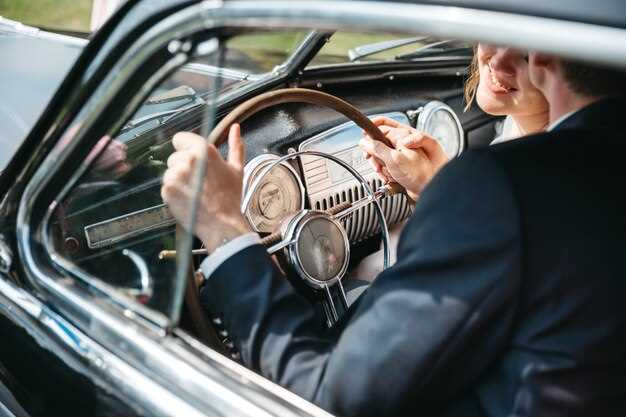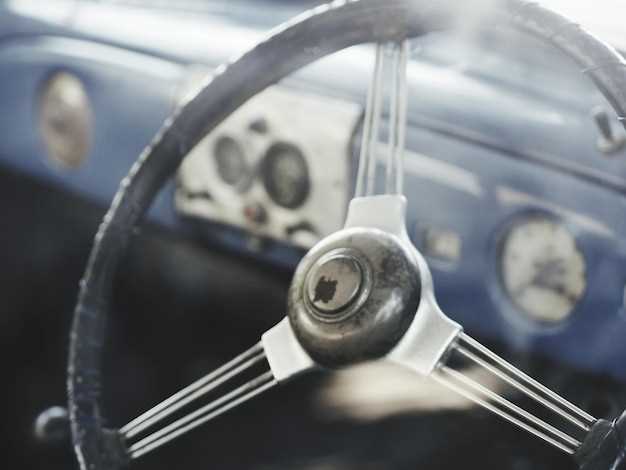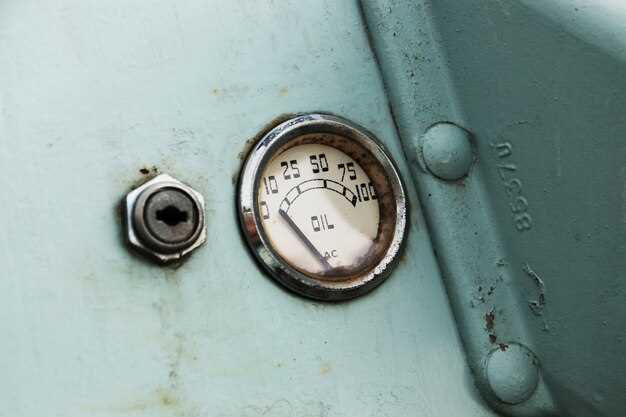
When evaluating a vintage vehicle, mileage plays a crucial role in the appraisal process. It can significantly influence the overall perception of the car’s condition and desirability, making it a vital factor for both collectors and enthusiasts. Understanding the impact of mileage on vintage vehicles can help potential buyers make informed decisions, ultimately leading to improved investment outcomes.
In this article, we will provide valuable tips on how to assess the mileage of vintage vehicles and its implications for their valuation. The condition of the engine, transmission, and other essential components is often directly related to how many miles a car has traveled. Low mileage can indicate less wear and tear, but it might not always lead to higher value if the vehicle has not been properly maintained or restored.
Additionally, we’ll explore various metrics and benchmarks that can help gauge the true impact of mileage on appraisal values. By analyzing historical data and market trends, collectors can better appreciate how mileage affects the desirability and price of vintage vehicles, ensuring that they make sound investments in their automotive collections.
How Mileage Affects the Market Value of Classic Cars

Mileage plays a significant role in determining the market value of classic cars. Generally, lower mileage is associated with better condition and less wear and tear, making these vehicles more desirable for collectors and enthusiasts. When it comes to appraisal, mileage is one of the first factors considered by experts. A classic car with exceptionally low mileage can command a premium price, as it often signifies careful ownership and limited use.
Conversely, high mileage can negatively impact a vintage vehicle’s market value. Buyers are often wary of cars that have been driven extensively, fearing that potential maintenance issues may arise due to increased wear on parts. This leads to a diminished appraisal value, as high mileage can suggest that the vehicle might require costly repairs or restoration.
However, it’s essential to recognize that mileage isn’t the sole indicator of a classic car’s worth. Other factors, such as maintenance history, original parts, and overall condition, also play a significant role in valuation. Yet, when considering mileage, it is helpful to refer to comparables in the market. Classic cars of the same model and year with varying mileage can provide valuable insights during an appraisal.
For potential buyers and sellers, understanding the relationship between mileage and market value can lead to better decision-making. Sellers should consider documenting mileage and service records to enhance their appraisal. Buyers, on the other hand, should look at mileage in conjunction with other condition indicators to ensure they are making a sound investment. Ultimately, while mileage is a critical factor, it should always be evaluated within the context of the vehicle’s overall history and condition.
Identifying Mileage Thresholds for Accurate Appraisals
When appraising vintage vehicles, understanding mileage thresholds is crucial for assessing a car’s value accurately. Mileage is one of the critical factors that significantly influence the appraisal process. Generally, a vintage vehicle with lower mileage tends to be valued higher than one with excessive wear, which can be indicated by high mileage figures.
To determine appropriate mileage thresholds, appraisers often consider the vehicle’s age and typical usage patterns. For instance, collector cars that have been driven less than 50,000 miles may represent an elite category, attracting premium valuations. Conversely, vintage vehicles exceeding 100,000 miles may face depreciation due to potential mechanical issues and a diminished rarity.
One key tip for appraisers is to analyze similar models within the same category. By comparing vehicles with similar age and mileage, you can establish a benchmark for pricing. Additionally, it is important to evaluate the condition of the vehicle alongside its mileage. A well-maintained classic car with higher mileage may still fetch good appraisal numbers if it has been preserved properly.
Another tip is to account for the types of mileage accrued. Cars mostly used for weekend drives or car shows might retain their value better than those used for daily commuting. Documented history of maintenance, upgrades, and previous ownership can also provide valuable insights regarding the mileage impact on a vehicle’s overall market value.
Lastly, always stay informed about market trends in the vintage vehicle sector. Trends can shift the perceived value of mileage, making it essential to adjust your appraisal strategies accordingly. By recognizing these mileage thresholds and combining them with other appraisal criteria, you can achieve a more accurate valuation for vintage vehicles.
Practical Tips for Assessing Vehicle Condition Beyond Mileage

When appraising a vintage vehicle, mileage is just one of many factors influencing its value. Understanding the overall condition of the vehicle is crucial for a precise evaluation. Here are some practical tips to consider during the appraisal process.
1. Examine Exterior Paint and Bodywork
Inspect the vehicle’s paint for signs of fading, rust, or inconsistencies. A well-preserved exterior often indicates careful ownership. Pay attention to the bodywork; ensure that there are no dents, scratches, or signs of repair that could impact value.
2. Check for Underlying Structural Integrity
Assess the chassis and frame for signs of corrosion or damage. Vintage vehicles can be susceptible to rust, so look for areas prone to deterioration. A solid structure is essential for both safety and valuation.
3. Evaluate Interior Quality
Inspect the seats, dashboard, and other interior components. Original upholstery and features can significantly enhance a vehicle’s value. Look for wear, discoloration, or modifications that may affect authenticity.
4. Test Engine Performance
Conduct a thorough examination of the engine, transmission, and other mechanical systems. Listen for unusual noises and check for leaks. A well-maintained engine with regular service history can positively impact valuation.
5. Review Maintenance Records
Gathering documentation on the vehicle’s maintenance history provides insight into its overall care and value. Well-documented service records may indicate a responsible owner and contribute positively to the appraisal.
6. Research Historical Significance
The model’s historical context can affect its value. Limited production runs, unique features, or celebrity ownership may enhance desirability. Understanding these aspects is crucial for accurate appraisal.
7. Seek Professional Help
If uncertain, consider hiring a qualified appraiser specializing in vintage vehicles. Their expertise can provide an objective assessment, ensuring that all relevant factors, including those beyond mileage, are taken into account.
In conclusion, while mileage is an important aspect of vintage vehicle valuation, it is essential to conduct a comprehensive assessment of the car’s overall condition. By following these practical tips, you can make a more informed appraisal that truly reflects the vehicle’s worth.


